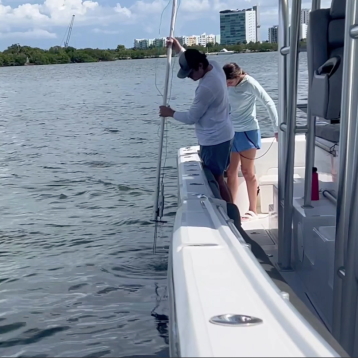Sediment Sampling for Sulfide
SeaKeepers' Vessel DISCOVERY
North Biscayne Bay, Florida
September 2 - October 31, 2022
Leadership
Research Team
Charles Groppe, Masters Student, RSMAS.
Purpose of Research
To determine the levels of sulfide in the sediment pore waters of the different basins in north Biscayne Bay. Sulfide ion can turn into poisonous H2S gas when conditions near the bottom become hypoxic. H2S has been implicated as the cause of death of both seagrass and fish in Florida Bay. This research will investigate if H2S may also be responsible for seagrass and fish dieoffs in north Biscayne Bay.
Duration of Project
September 2, 2022 - End of October 2022
Project Overview
This research involves the collection of small sediment cores using a pole and coring device systematically in a grid across the north bay. The cores will be returned to RSMAS, where they will be squeezed to extract the pore water. The water samples obtained will then be analyzed for [S] using the methylene blue method. These samplings will be done bi-weekly from early September till the end of October and perhaps beyond. We will also return to these sites in the spring of 2023.
Application
Pore waters with high sulfide and H2S production are in areas with a lot of nutrients and organic matter. The ultimate fix will be a reduction of nutrient inputs to the bay. However, a quick fix that could avert a fish kill event would be the addition of iron which reacts with sulfide to produce a highly insoluble compound FeS.
Expedition Goal
The goal of these outings was to extract as many good samples of pore water from about ten different sites throughout northern Biscayne Bay.
Location
Northern and middle Biscayne Bay, Miami, Florida

